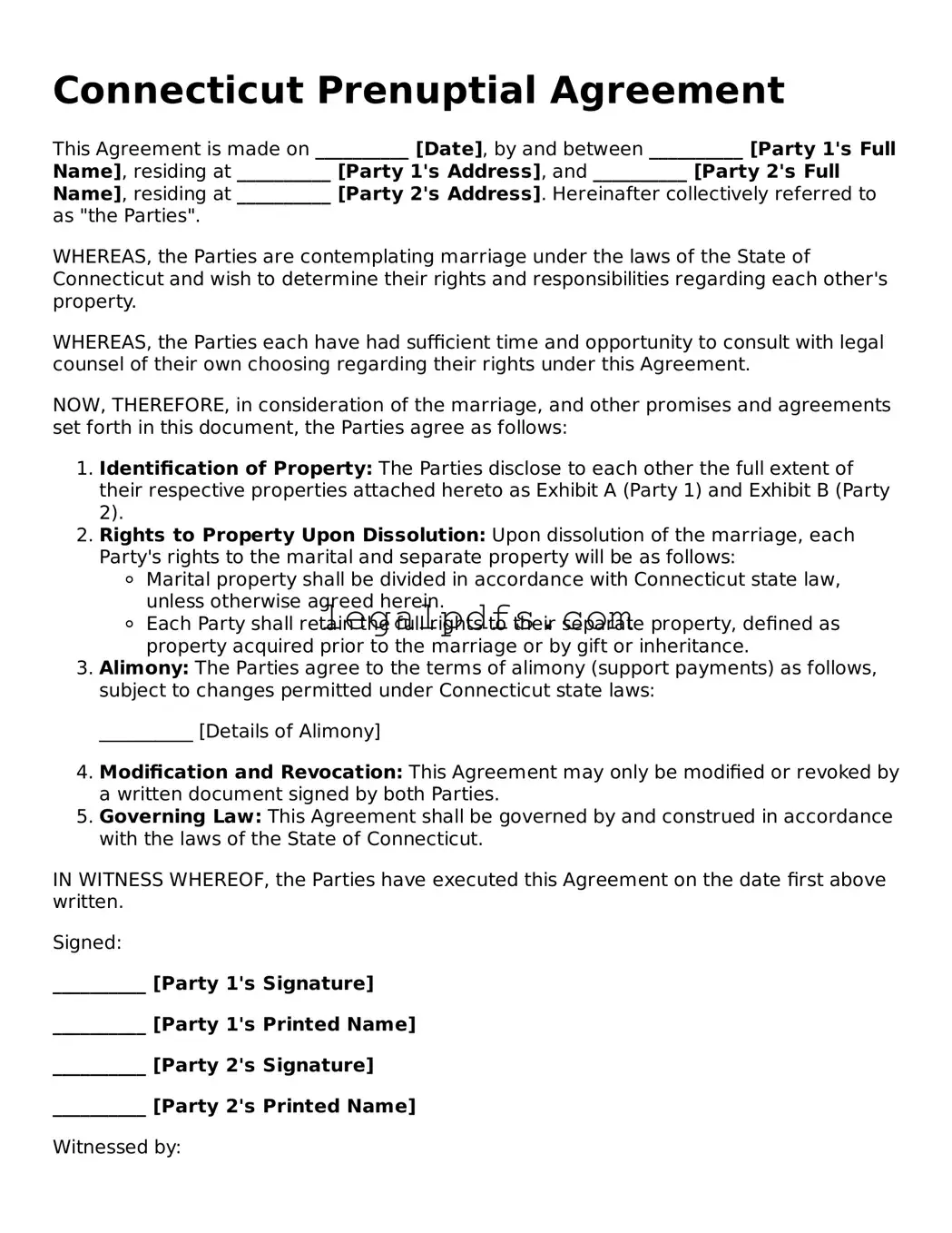What is a Connecticut Prenuptial Agreement?
A Connecticut Prenuptial Agreement is a legal document that a couple signs before getting married, specifying how they will divide their assets and handle financial matters if they decide to divorce or if one partner dies. It can cover everything from savings and properties to debts and inheritances, providing clarity and security for both parties.
Who should consider getting a Prenuptial Agreement in Connecticut?
Anyone with personal assets, debts, or children from previous relationships should consider a Prenuptial Agreement. It's especially recommended for individuals entering the marriage with significant differences in wealth or those who wish to protect their financial independence and provide clear expectations for the future.
Is a Prenuptial Agreement legally binding in Connecticut?
Yes, in Connecticut, a Prenuptial Agreement is legally binding if it is executed correctly. Both parties must fully disclose their financial assets and liabilities, enter the agreement voluntarily, and the agreement must be fair and not result in an unconscionable outcome at the time of enforcement.
Can a Prenuptial Agreement in Connecticut be modified or revoked after marriage?
A Prenuptial Agreement can be modified or revoked after marriage only if both parties agree to the changes in a written document, following the same formalities as the original agreement. Without mutual consent, the original agreement typically stands as written.
What happens if we don't have a Prenuptial Agreement in Connecticut?
If a couple does not have a Prenuptial Agreement in Connecticut, their assets and debts will be divided according to state laws in the event of a divorce. This usually means a fair, but not necessarily equal, distribution of marital property, which may or may not align with the couple's wishes.
How do we ensure our Connecticut Prenuptial Agreement is enforceable?
To ensure your Prenuptial Agreement is enforceable in Connecticut, both parties should have separate legal counsel (or waive the right to it after being advised to seek it), disclose all assets and liabilities fully and accurately, and ensure the agreement is executed voluntarily without duress. It also helps to finalize the agreement well in advance of the marriage to avoid claims of coercion.
Does a Prenuptial Agreement in Connecticut only cover assets and debts?
While assets and debts are primary concerns, a Connecticut Prenuptial Agreement can also address alimony, inheritance rights, and the division of property upon divorce or death. However, it cannot dictate terms regarding child support, custody, or visitation, as these are determined based on the child's best interests at the time of divorce.
What are the steps to create a Connecticut Prenuptial Agreement?
The steps include deciding whether a prenup is right for you and your partner, discussing and agreeing on the terms, disclosing all financial information fully, drafting the agreement (often with the help of legal counsel), and then signing it in the presence of a notary. It's important to complete this process well before the wedding to ensure fairness and avoid pressure.
